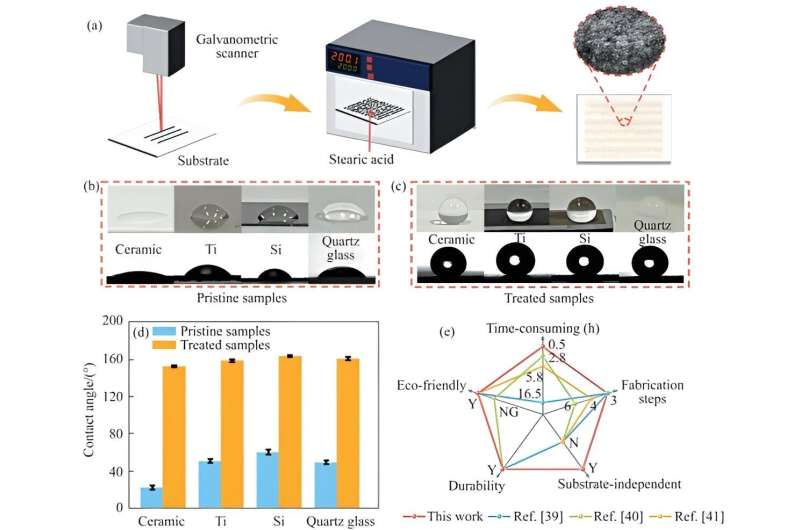This article has been reviewed according to Science X's editorial process and policies. Editors have highlighted the following attributes while ensuring the content's credibility:
fact-checked
proofread
A novel technique for creating superhydrophobic surfaces

Superhydrophobic surfaces, characterized by their ability to repel water with a contact angle above 150° and a sliding angle below 10°, offer a range of applications from self-cleaning and anti-corrosion to oil/water separation and droplet manipulation. Traditionally, creating such surfaces has been challenging, requiring complex, time-consuming, or material-specific methods.
Recent advancements, however, include innovative techniques like 3D printing for adjustable porosity, hydrothermal methods for antibacterial coatings, and soft-imprinting for lotus-inspired textures. Despite these developments, a need for simpler, versatile methods persists.
A new study published on 19 January 2024, in the Journal of Central South University focused on a novel technique for creating superhydrophobic surfaces that can repel water effectively.
This new method for creating water-repellent surfaces has two main steps. First, a special laser (femtosecond laser) is used to carve tiny patterns on different materials. This carving is really detailed, making small structures that help enhancing surface roughness. Next, these laser-carved surfaces are coated with stearic acid, a substance that makes them water-repellent by reducing surface energy.
This combination of laser carving and chemical coating creates a strong water-repellent surface. What's great about this method is that it can be used on many different materials like metals, ceramics, and plastics, making it more versatile than older techniques. This could be really useful for things like keeping electronic devices safe from water or improving medical tools.
Professor Yin Kai, the lead researcher, stated, "Our femtosecond laser-chemical hybrid processing technique marks a significant advancement in material science, offering a versatile approach to creating superhydrophobic surfaces on various substrates."
The femtosecond laser-chemical hybrid processing technique represents a leap forward in the creation of superhydrophobic surfaces, with potential implications across a broad range of fields. By enabling the application of superhydrophobic coatings on various materials, this research paves the way for innovations in surface science and technology.
More information: Wei-xuan Weng et al, Femtosecond laser-chemical hybrid processing for achieving substrate-independent superhydrophobic surfaces, Journal of Central South University (2024). DOI: 10.1007/s11771-023-5527-x
Provided by TranSpread




















